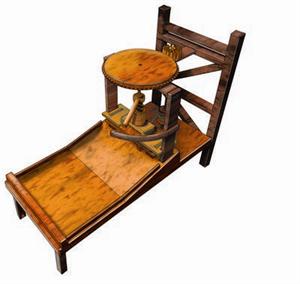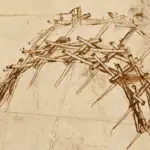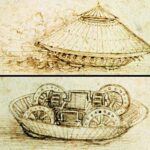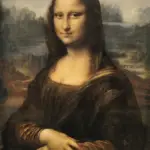
Da Vinci Printing Press Model
Da Vinci Printing Press combines Leonardo da Vinci’s genius with the revolutionary printing press.
You’ll find your answers here if you’re curious about the surprising connection between this Renaissance icon and the printing revolution. Dive into this exploration to uncover how Leonardo’s inventive mind contributed to advancing the efficiency of printing technology.
Leonardo da Vinci, known for his vast array of inventions, did not invent the printing press. However, he studied and modified the Gutenberg printing press to enhance efficiency.
Leonardo’s adjustments to the printing press highlight his ability to innovate existing technology, showing his significant impact beyond art and science.
Examining da Vinci’s work on the printing press reveals the depth of his interest in practical inventions. Understanding how his ideas improved the press enables a greater appreciation of his diverse talents.
Leonardo da Vinci’s Influence on Printing
Leonardo da Vinci was surrounded by a world bursting with new ideas, especially in printing, which helped spread knowledge.
Although he did not invent the printing press, his era influenced typesetting and bookmaking methods. His work also significantly shaped how books were created and consumed during the Renaissance.
Early Printing Technology
When Leonardo da Vinci was alive, the Gutenberg printing press revolutionized the way books were made.
This invention allowed books to be printed quickly and in large numbers, spreading education and ideas faster than before. Leonardo, a man of epochal change, benefited from this, even though he was not directly involved in developing the Da Vinci printing press.
Advancements in Typography
Leonardo had a keen eye for design and detail. Even though he did not create new types of fonts, he influenced advancements in typography. His sketches show a fascination with how letters were formed and arranged.
This interest in lettering contributed to developing more aesthetically pleasing and readable typefaces, which became more common as printing methods advanced through the Renaissance.
Renaissance Impact on Printing
The Renaissance period saw an explosion of learning, which the printing press made possible. Leonardo’s vast body of work and numerous paintings inspired printed materials rich in detail and artistic value.
Printing became a tool for spreading Leonardo’s and other artists’ work, allowing more people to engage with their ideas—this broader access to information led to changes in how knowledge was shared and consumed during the time.
Design and Mechanism
The Da Vinci Printing Press showcases unique design features that distinguish it from earlier models like the Gutenberg Press. This section highlights Leonardo’s creative adaptations and how they are compared to existing technology.
Innovations in Press Design
Leonardo da Vinci imagined a press system incorporating mechanical precision and ease of use. His design involved a screw mechanism that used levers and gears to apply pressure, allowing for more consistent printing results.
This method improved the efficiency of printing operations, making it possible to print more pages in a shorter time. Leonardo’s focus on mechanical efficiency set his designs apart, showcasing his ability to enhance existing technologies like the Gutenberg Printing Press.
Da Vinci’s Press Modifications
Da Vinci’s printing press introduced modifications aimed at increasing print quality. By adjusting the alignment and pressure of the type bed and platen, his design ensured an even ink distribution, which was vital for producing clearer and more consistent images and text.
Leonardo also experimented with different materials, suggesting stronger woods and metals to enhance durability. These refinements showcased his understanding of art and engineering, bridging the gap between the two disciplines through creative innovation.
Comparison to Gutenberg’s Press
When comparing the Gutenberg Press to the Da Vinci Printing Press, one can see apparent differences in design approach. Gutenberg’s press was a groundbreaking invention in its own right, using a screw press concept adapted from wine and olive presses.
However, Leonardo’s design was more advanced mechanically. His use of multiple gear systems and precise engineering streamlined the printing process and improved output quality.
While Gutenberg laid the groundwork, Da Vinci’s enhancements paved the way for more efficient and reliable printing methods.
Cultural and Educational Significance
The Da Vinci Printing Press profoundly impacted the spreading of knowledge, shaping literature and leaving a lasting legacy in scholarly publishing. Its influence extended far beyond just technological advances.
Spread of Knowledge
The Da Vinci Printing Press played a pivotal role in increasing the accessibility of information. With the mass production of books, knowledge became available to a broader audience. This democratization of learning broke the barriers set by the elite who previously controlled information.
Books and manuscripts could be shared across Europe, fostering an environment ripe for intellectual growth. Comparably, the Gutenberg Printing Press also contributed significantly to the spread of learning by enabling the mass distribution of texts, thereby empowering education and learning.
Influence on Literature
The invention of the Da Vinci Printing Press allowed authors to reach new audiences. It enabled the creation and dissemination of different literary forms, influencing how stories and ideas were shared. As a result, literary culture flourished, producing diverse works.
Authors could now gain recognition beyond their local areas. This recognition expanded the literary world, allowing more voices and stories to be heard and preserved, consequently shaping the literary landscape of the era.
Its platform for writers is akin to how modern-day publishing enables widespread access to literary works.
Legacy in Scholarly Printing
The Da Vinci Printing Press laid the groundwork for the future of scholarly publishing. It established a precedent for accurate and reliable text reproduction crucial for scientific and academic communities.
This advancement ensured that ideas could be preserved and built upon over time. Scholarly texts and research reached a broader audience, which is crucial for developing various academic fields.
Today, the printing traditions that began with innovations like Leonardo da Vinci’s influence on printing technology continue to play a key role in disseminating academic knowledge.
Frequently Asked Questions
The printing press’s legacy is rich with questions about its inventors and legacy. Although not an inventor of the printing press, Leonardo da Vinci contributed significantly to inventions and innovation.
Did Leonardo da Vinci use the printing press?
Leonardo da Vinci did not actively use the printing press for his works. Instead, he focused on creating designs and drawings in his notebooks, which documented his ideas and inventions.
Who actually invented the printing press?
Johannes Gutenberg is credited with inventing the printing press around 1440. His invention revolutionized the reproduction of books and other printed materials, making them more accessible to the public.
What inventions did Da Vinci invent?
Leonardo da Vinci was a prolific inventor. His notable designs include the flying machine, an early version of the helicopter, and the armored vehicle. These inventions highlight his forward-thinking approach and his impact on future technological advancements.
Did any of Da Vinci’s machines work?
Many of Da Vinci’s machines were conceptual designs and were never built during his lifetime. However, some of his inventions, such as his mechanical devices, have been constructed in modern times and shown to work effectively.
Was the printing press used for art?
Yes, the printing press played a significant role in art distribution. Artists and publishers used it to reproduce and disseminate illustrations, contributing to spreading artistic styles and techniques across Europe.
Who made the first printing press in the Renaissance?
Johannes Gutenberg invented the first printing press in the Renaissance. His press introduced movable type to Europe, laying the foundation for the mass production of books and written materials.
Why is the printing press so important?
The printing press is crucial because it democratized knowledge. Making books more affordable and widely available paved the way for spreading literacy and sharing ideas, fueling movements like the Renaissance and the Enlightenment.
Who invented the printing press in the 14th century?
The invention of the printing press is attributed to Johannes Gutenberg in the mid-15th century, not the 14th century. His work in Mainz, Germany, started a new era in information dissemination.
What are some fun facts about the printing press?
Fun facts about the printing press include that it drastically reduced the cost of books, enabling the spread of literacy. Gutenberg’s Bible, one of the first significant books printed, symbolizes this transformative historical period.
 I’m Leonardo Bianchi, the mind behind Leonardo da Vinci's Inventions. Thanks for visiting.
I’m Leonardo Bianchi, the mind behind Leonardo da Vinci's Inventions. Thanks for visiting. 


